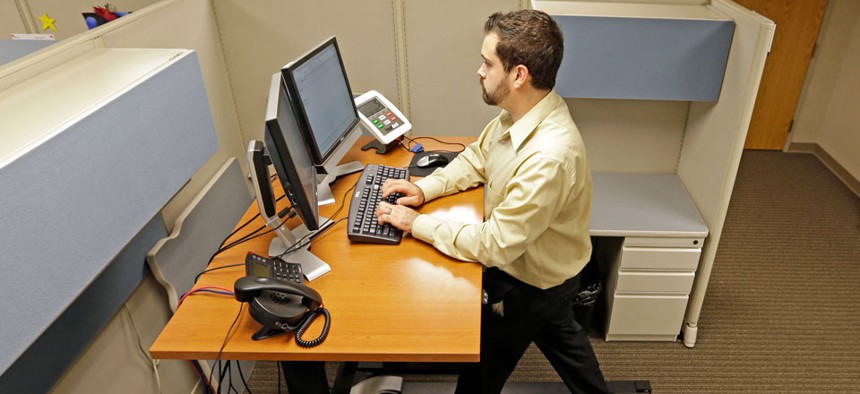The Complete Guide to the Standing Office
How to combat the effects of sitting on the job.
Chairs, once a luxury, quickly became embedded in the workplace, thanks to Henry Ford. In the early 1900s, Ford thought that production workers could better perform repetitive tasks if they remained stationary.
“The industrial revolution meant that you could break up everyone’s work into small parts,” Berkeley professor Galen Cranz, author of The Chair: Rethinking Culture, Body, and Design told Quartz.“Everyone was sitting in a factory with the work going by, just performing the same repetitive motion over and over again. At first that felt good. You’re taking a load off of your feet.”
A century later, what once brought us comfort is slowly killing us. A study released last summer found that sitting for more than three hours a day can cut life expectancy by two years. A recent University of Leicester study concluded that sitting for long periods of time increases the risk of diabetes and heart disease. Meanwhile, the American Medical Association adopted a policy recognizing the potential health risks of sitting by “encouraging employers…to make available alternatives to sitting, such as standing workstations.”
According to Cranz, people haven’t been sitting in chairs for all that long. For thousands of years, humans worked on their feet, performing complex “whole body” tasks that required walking, running, reaching, stooping, and squatting. Fifty years ago, more than half of US jobs required physical activity but that has since shrunk to less than 20%. Now, there’s a movement to return to a work environment that is more natural and replicates the “whole body” activity of years past.
Furniture makers have responded with workspaces that are more ergonomically designed, where office equipment is made to maximize productivity and minimize discomfort. Here’s a guide to ergonomic standing work stations in the age of the information economy.



